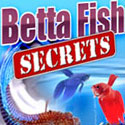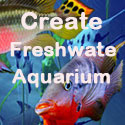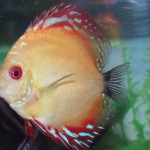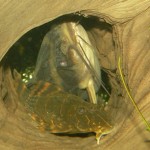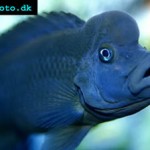Lighting
For a successful planted tank you must have light. A recommended starting light level is 2 watts per gallon; note that these are florescent watts. There are some plants that will survive and possibly even grow at lower light levels but these plants are few and far between. Most “fish” tanks don’t come with nearly enough light to grow plants. A good case in point is the standard 55 gallon tank sold in the US. It comes with either one 40 watt bulb or two 15-18 watt bulbs. This is enough light to see the fish and prevent the majority of algae growth.
As far as special plant bulbs, they do work, so long as you get to the 2 watt per gallon range. Most any color temp or K bulb will work so long as they fall into the 5000k-10,000k range. Most people shoot for 5000k-6700k range. One thing to avoid is actinic reef lights. The blue light of these bulbs will not help your plants much if at all and some people have said they tend to promote algae growth. One thing to note is if this is your first foray into planted tanks you want to stay under 2.5 watts per gallon unless you are willing to invest the time and/or money into a CO2 system.
Substrate
The normal substrate in a planted tank is usually much smaller in grain size than that used in a fish tank. 1-3 mm is size is what one looks for. Also uncoated gravel is much better than the coated gravel. The best place to find gravel of this nature is at an industrial supply house or a good local fish store. Depth should be a minimum of two inches. There are several specialty substrates, Seachem Flourite and Onyx sand, CaribSea Eco-Complete, and Red Sea Flora Base are good examples of these substrates. The one thing that these substrates have that gravel doesn’t is the ability to hold nutrients. Most of them also have high levels of iron or other needed nutrients. There is also a product called Laterlite that is designed to be mixed into the bottom layer of a substrate, its function is to provide iron. I myself prefer to use one of these products either alone or mixed at no more than a 50/50 ratio based on depth. It’s not uncommon for planted tanks to have substrate in the 3-4″ depth range. Some people use plain old sand, others use kitty litter, some use Profile or Turface (Schultz Aquatic Soil). All will work but your mileage may vary. When in doubt use a quality substrate. One tip here with any of the specialty substrates is to place a very fine layer of pure ground garden peat at the very bottom. This provides an acidic environment to aid in the release of the nutrients. One thing to watch out for is any substrate that contains shell bits or other carbonate containing material. If you are not sure you can test by taking a small amount of dry substrate and placing some muriatic acid on it. If it bubbles or fizzes, avoid it.
Fertilizers
There are any number of good commercial aquatic plant fertilizers on the market. Advanced hobbyists tend to use pure chemical compounds to fertilize the tank. To start with you are best off using a commercial product. I recommend the Seachem line, as they are time tested and widely available. For a successful planted tank you need to keep your nutrient levels in balance. This promotes good plant growth and helps to keep algae growth to a minimum. Suggested levels are:
Nitrates 5-10 ppm, Phosphates 0.5-1.0 ppm, Iron 0.1-0.3 ppm, and Potassium 10-20 ppm. If you water is very soft you may also have to provide a source of calcium and magnesium.
CO2
CO2 provides carbon, which is a necessary building block of life. If you have a high light tank (more than 3 watts per gallon) then CO2 is not an option but a necessity to keep your plants healthy and growing and keep algae to a minimum. One can either use a DIY CO2 generator or go with a pressurized system. DIY is good for small, lower light tanks. Once your tank size reaches the 30 gallon mark and/or you go over 3.5 watts per gallon a pressurized system becomes a must. I’m not going to cover all the options here so if you have questions just ask. The ideal CO2 levels for a planted tank are in the 15-30 ppm range.
Water Chemistry
So long as you are able to drink your tap water without harm it can be used to grow plants. Some plants may not do as well in extremely soft or hard water but most plants are very adaptable. A pH anywhere in the 6.4-8.5 range is fine. A general hardness, gH, of 3-15 degrees and a carbonate hardness, kH, of 3-12 is fine. If your water is very soft and you are using CO2 injection you want to be sure and add something to get your kH up to at least 3 degrees to prevent large pH swings. If your gH is very low then you may need to provide your plants with calcium and magnesium. If in doubt ask questions.
One thing to avoid is the use of any chemical buffers to adjust the pH. Doing so usually results in what I call chasing the dragon. You add the buffer, the pH changes, then in a matter of minutes to days rebounds to the former level. So you all more buffer and repeat the process. This is very harmful to your fish. If you need to lower the pH then use CO2 injection. If you need to raise it (and very few of us do) then use something like baking soda or calcium carbonate. If you have questions ask.
Water changes
Once you have a planted tank up and running and are adding fertilizers you should be doing regular water changes. This helps your fish and your plants. I myself do a minimum of one 50% water change every week on all my tanks. The smaller the tank the more frequent the water changes. I use a Python to change the water. I just use it as an ordinary siphon house to drain the tanks and the hook it to the faucet to fill the tanks. If you follow this method be sure when you add your water conditioner to add enough to treat the whole tank and not just the amount of new water you are adding.



